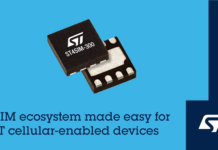
The internet of things (IoT) is transforming the health care industry by redefining how applications, devices and people interact and connect with each other in delivering healthcare solutions.
IoT is offering new tools as well as efficiencies that make up an integrated health care system with the view of ensuring patients are cared for better, health care costs are reduced significantly and treatment outcomes are improved.
According to IBM, the major advantages of the IoT for health care organizations are:
-Decreased costs: When health care providers take advantage of the connectivity of the health care solutions, patient monitoring can be done on a real time basis, thus significantly cutting down on unnecessary visits by doctors. In particular, home care facilities that are advanced are guaranteed to cut down on hospital stays and re-admissions.
-Improved outcomes of treatment: Connectivity of health care solutions through cloud computing or other virtual infrastructure gives caregivers the ability to access real time information that enables them to make informed decisions as well as offer treatment that is evidence based.
-Enhanced patient experience: The connectivity of the health care system through the internet of things, places emphasis on the needs of the patient. That is, proactive treatments, improved accuracy when it comes to diagnosis, timely intervention by physicians and enhanced treatment outcomes result in accountable care that is highly trusted among patients.
-Enhanced management of drugs: Creation, as well as management, of drugs is a major expense in the healthcare industry. Even then, with IoT processes and devices, it is possible to manage these costs better.
Seth Feder, Director of Information Management and Technology at the Dell Medical School (University of Texas) said that the institution has been implemented an IoT strategy to improve the relationship with patients. The executive said that patients are handed a tablet which acts as their “badge” while they stay at the hospital. With this tool, the hospital staff is notified when patients check-in and when they arrive to the exam room.
“Our goal is to extend out connection with patients at home. IoT will enable patients to stay connected by updating their status, pain and medication to us electronically,” Feder said during a presentation at the Enterprise IoT Summit, which took place in Austin, Texas, earlier this year. “The idea is not have patients need to return unless necessary.”
https://www.youtube.com/watch?v=wd7MGLZE7ps
“We need devices that connects directly to resilient and reliable data networks, independent of consumer managed in-home equipment,” Feder added.
Source: enterpriseiotinsights.com


















